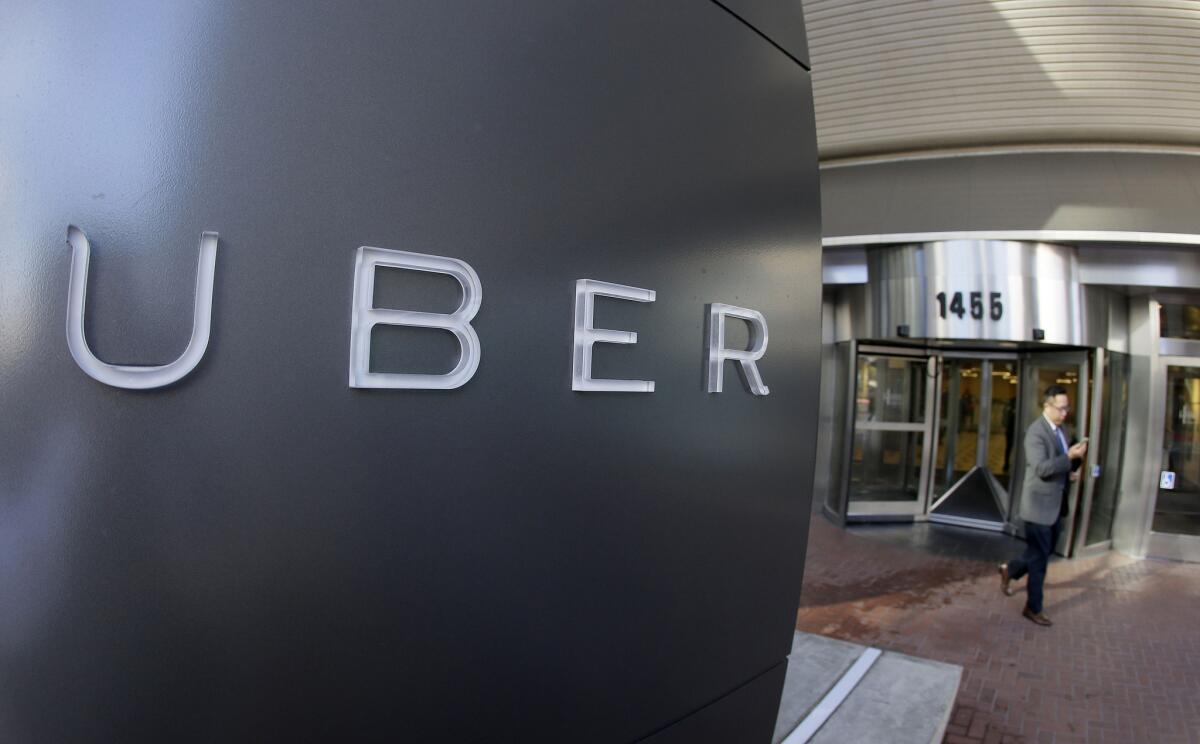Uber says it will turn a profit later this year after losing $8.5 billion in 2019

- Share via
Uber Technologies Inc. said it will deliver a first-ever quarterly profit by the end of the year, signaling that cost-cutting measures are exceeding even the company’s own recent expectations.
The company will become profitable on an adjusted basis by the fourth quarter, Chief Executive Dara Khosrowshahi said Thursday in a conference call to discuss financial results. A previous plan set this goal for 2021. The stock was up about 5% in extended trading.
The drive toward profitability is likely to take a toll on growth. Chief Financial Officer Nelson Chai said gross bookings will decline slightly in the first quarter from the previous period.
The fourth quarter is also when rival Lyft will overtake Uber in U.S. market share, according to a new projection by Apptopia, a data firm, based on analysis of download and retention rates for the companies’ apps. Asked about that forecast, an Uber spokesperson said in a statement, “This report is contradicted by our own internal data, as well as other third-party reports. We continue to lead the ridesharing category in the U.S., and every major region where we operate around the world.” Other analyses have put Lyft’s U.S. market share at less than 40%.
For the fourth quarter of 2019, Uber edged out Wall Street’s expectations, with bookings up 28% and a loss that was narrower than analysts’ estimates. Gross bookings were $18.1 billion, showing that demand for transportation and food delivery orders remains strong. The measure, which represents the total value of rides, food orders and other businesses, is closely watched by investors.
Efforts to rein in spending are proving especially effective. The San Francisco company reported an adjusted loss of $615 million, compared with the $713-million average of analysts’ estimates compiled by Bloomberg. The loss, which excludes interest, taxes and other expenses, was $817 million in the same quarter a year earlier.
Uber is trying to more closely connect its various services and increase use among the more than 100 million customers who open the app each month. The company is investing in electric bicycle and scooter rentals and experimenting with helicopter rides and temporary staffing.
The new businesses are expensive, though, and investors have punished the company for burning cash to fuel growth. The stock, which went public in May, trades below its initial offering price. Uber said Thursday that its loss for the year using generally accepted accounting principles was $8.51 billion. The startling figure was driven primarily by stock compensation and one-time costs associated with the initial public offering.
In the last year, Uber has taken steps to check its spending. It reduced marketing expenses, cut more than 1,000 employees and abandoned some unprofitable food delivery units. It ended delivery in South Korea and sold the delivery operation in India last month.
The ride-hailing business was profitable on a stand-alone basis in the fourth quarter, Uber said. The company lost $130 million on its “other technology programs,” including the autonomous driving division, which is funded by Uber, SoftBank Group Corp., Toyota Motor Corp. and others.
Uber didn’t disclose the amount it spent battling government initiatives, such as California’s Assembly Bill 5, a new law that reclassifies most gig economy workers as employees. Regulators in Colombia, London and parts of Canada have all moved to ban the service from operating; Uber in most cases is appealing those decisions. The U.S. and Canada accounted for most of Uber’s revenue in the fourth quarter.





